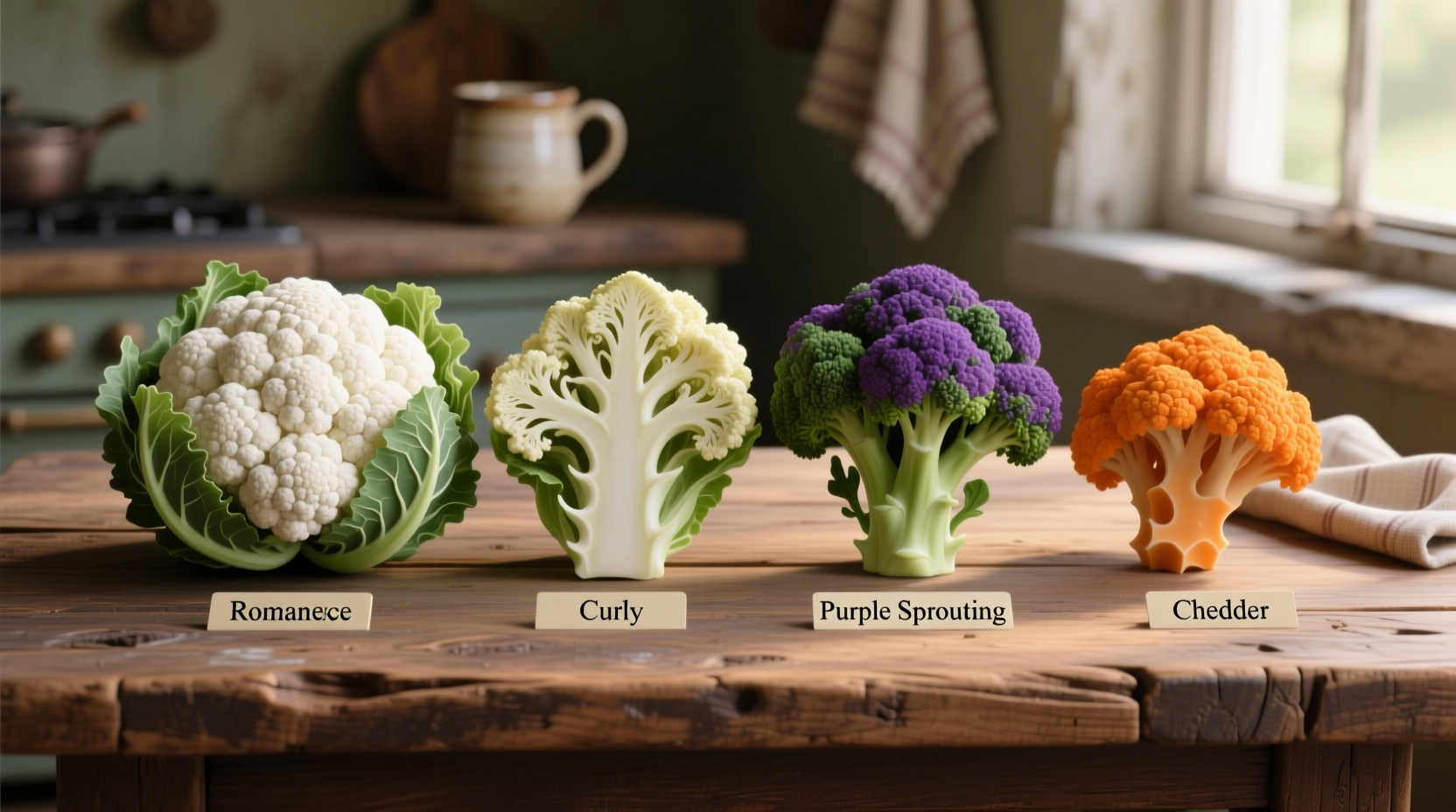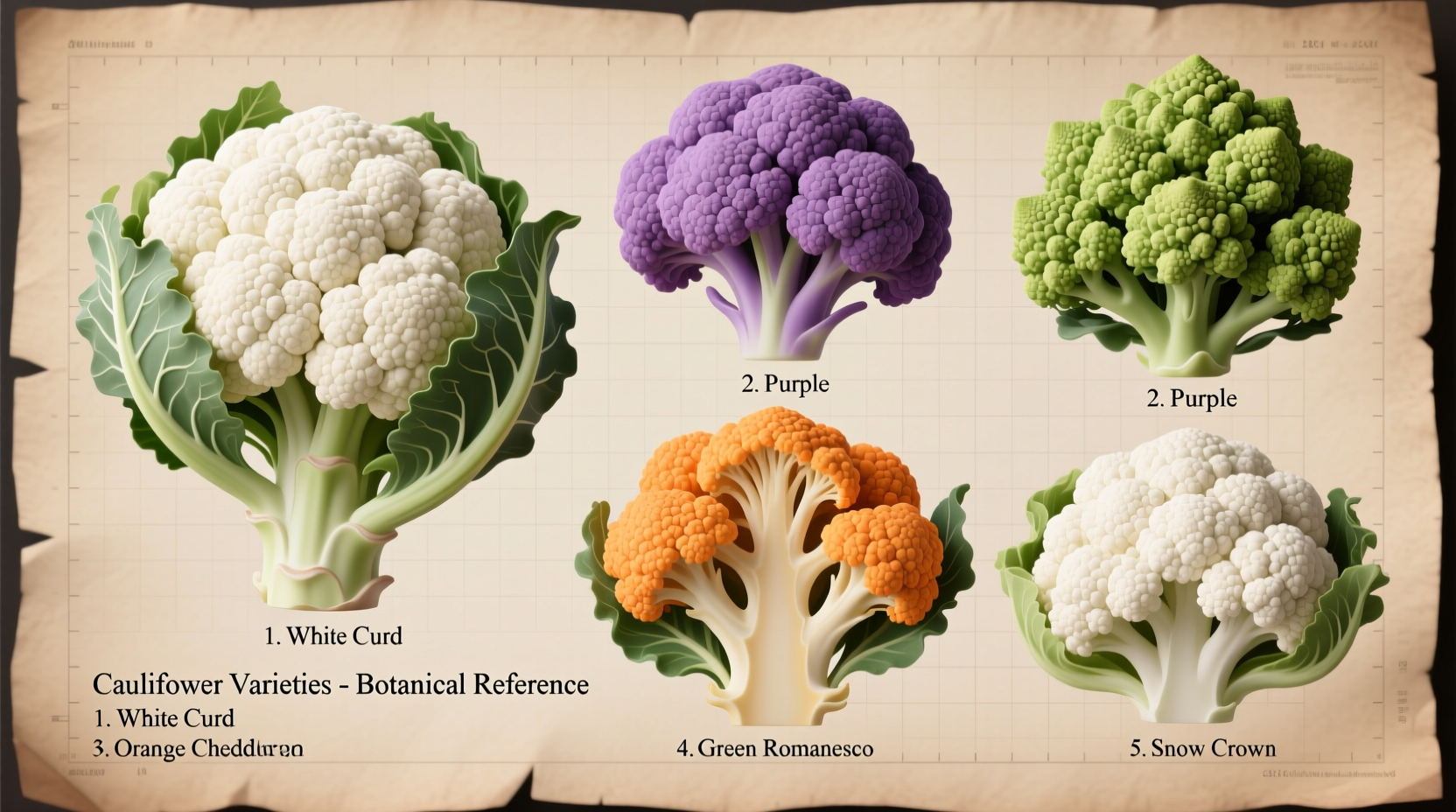Discovering the diverse world of cauliflower goes far beyond the standard white variety most shoppers recognize. Understanding these different types transforms your cooking experience, allowing you to select the perfect variety for specific recipes while maximizing nutritional benefits. This comprehensive guide reveals exactly what sets each cauliflower type apart and how to leverage their unique characteristics in your kitchen.
Understanding Cauliflower Varieties
Cauliflower belongs to the Brassica oleracea species, which also includes broccoli, kale, and cabbage. Through selective breeding over centuries, farmers developed distinct varieties with unique pigmentation, texture, and flavor profiles. While white cauliflower dominates supermarket shelves, specialty varieties offer enhanced nutrition and visual appeal that can elevate everyday dishes.
The Five Main Types of Cauliflower
White Cauliflower (Standard Variety)
The most widely available type, white cauliflower features compact, creamy-white florets protected by green leaves that prevent chlorophyll development. This variety accounts for approximately 85% of commercial production in North America according to USDA agricultural reports. Its neutral flavor and firm texture make it incredibly versatile for various cooking methods.
Orange Cauliflower
Developed through natural cross-breeding (not genetic modification), orange cauliflower gets its vibrant color from elevated beta-carotene levels—up to 25 times more than white varieties. This nutrient converts to vitamin A in the body, supporting vision and immune function. The Cheddar and Orange Bouquet varieties maintain their color when cooked, offering both visual appeal and nutritional advantages.
Purple Cauliflower
Purple cauliflower varieties like Graffiti and Violet Queen contain anthocyanins—the same antioxidants found in red cabbage and blueberries. These pigments provide anti-inflammatory benefits and create stunning visual contrast in dishes. Interestingly, purple cauliflower often turns green when overcooked due to chemical reactions between anthocyanins and chlorophyll.
| Variety | Color Compound | Nutritional Advantage | Best Cooking Method |
|---|---|---|---|
| White | None (low pigment) | Good vitamin C and K | Roasting, steaming, mashing |
| Orange | Beta-carotene | 25x more vitamin A precursor | Roasting, grilling, raw |
| Purple | Anthocyanins | Antioxidant-rich | Quick cooking, raw, pickling |
| Green (Romanesco) | Chlorophyll | Higher vitamin C | Steaming, roasting, raw |
Green Cauliflower (Romanesco)
Romanesco often gets mistaken for a cauliflower-broccoli hybrid, but it's actually a distinct variety of cauliflower. Its striking fractal pattern and chartreuse color make it visually distinctive. Romanesco has a nuttier, more complex flavor than standard cauliflower with subtle cheesy notes. The tightly spiraled florets hold their shape exceptionally well during cooking, making them ideal for roasting or grilling. According to Cornell University's agricultural extension, Romanesco requires slightly cooler temperatures to develop its characteristic shape properly.
Miniature Cauliflower Varieties
Mini cauliflower varieties like Cheddar Baby and Amazing produce single-serving heads weighing 4-8 ounces. These compact varieties have become increasingly popular for meal prep and convenience cooking. They typically mature faster than standard varieties and work particularly well for roasting whole or stuffing. The University of California's agricultural department notes these varieties often have slightly sweeter flavor profiles due to their concentrated growth.
How to Select and Store Different Cauliflower Types
When selecting any cauliflower variety, look for firm, compact heads with fresh-looking leaves and no brown spots. The stem should feel heavy for its size, indicating freshness. White cauliflower should have creamy-white coloring without yellowing, while colored varieties should display vibrant, consistent pigmentation.
Store cauliflower unwashed in a perforated plastic bag in your refrigerator's crisper drawer. Properly stored, white and orange varieties last 3-4 weeks, while purple and Romanesco maintain quality for 2-3 weeks. Mini varieties have slightly shorter shelf life at 1-2 weeks. Avoid washing before storage as excess moisture accelerates spoilage.
Culinary Applications by Cauliflower Type
Each cauliflower variety performs best with specific cooking techniques:
- White cauliflower: Ideal for mashing, ricing, and purees due to its neutral flavor. Roasts beautifully with caramelized edges.
- Orange cauliflower: Holds shape well when roasted or grilled. Its natural sweetness shines in soups and gratins.
- Purple cauliflower: Best with quick cooking methods to preserve color. Raw in salads or lightly steamed maintains vibrant hue.
- Romanesco: Standout feature in roasted vegetable medleys. Its structure holds up to grilling and works well in casseroles.
- Mini varieties: Perfect for individual portions—roast whole with herbs or use in stir-fries.

Nutritional Comparison of Cauliflower Varieties
All cauliflower types provide excellent vitamin C, fiber, and glucosinolates (compounds with potential cancer-fighting properties). However, colored varieties offer additional phytonutrients:
- Orange cauliflower contains significantly more beta-carotene (which converts to vitamin A)
- Purple varieties provide anthocyanins with antioxidant properties
- Romanesco typically has slightly higher vitamin C content
- All varieties maintain similar calorie counts (about 25 calories per cup)
According to USDA nutritional data, a one-cup serving of raw cauliflower provides approximately 77% of your daily vitamin C needs, 20% of vitamin K, and 10% of fiber requirements—regardless of color variety. The colored varieties simply add additional phytonutrient benefits without compromising the core nutritional profile.
Seasonality and Availability
Cauliflower grows best in cool temperatures, making fall and spring its peak seasons. White varieties are available year-round due to large-scale commercial production. Specialty varieties like purple and orange are most abundant from September through April in North America. Romanesco has a narrower seasonal window, typically available from late summer through early winter.
When specialty varieties aren't in season, frozen options provide comparable nutrition. The National Center for Home Food Preservation confirms that flash-frozen cauliflower retains 90% or more of its original nutrient content when properly processed.











 浙公网安备
33010002000092号
浙公网安备
33010002000092号 浙B2-20120091-4
浙B2-20120091-4